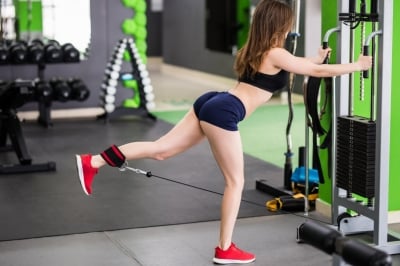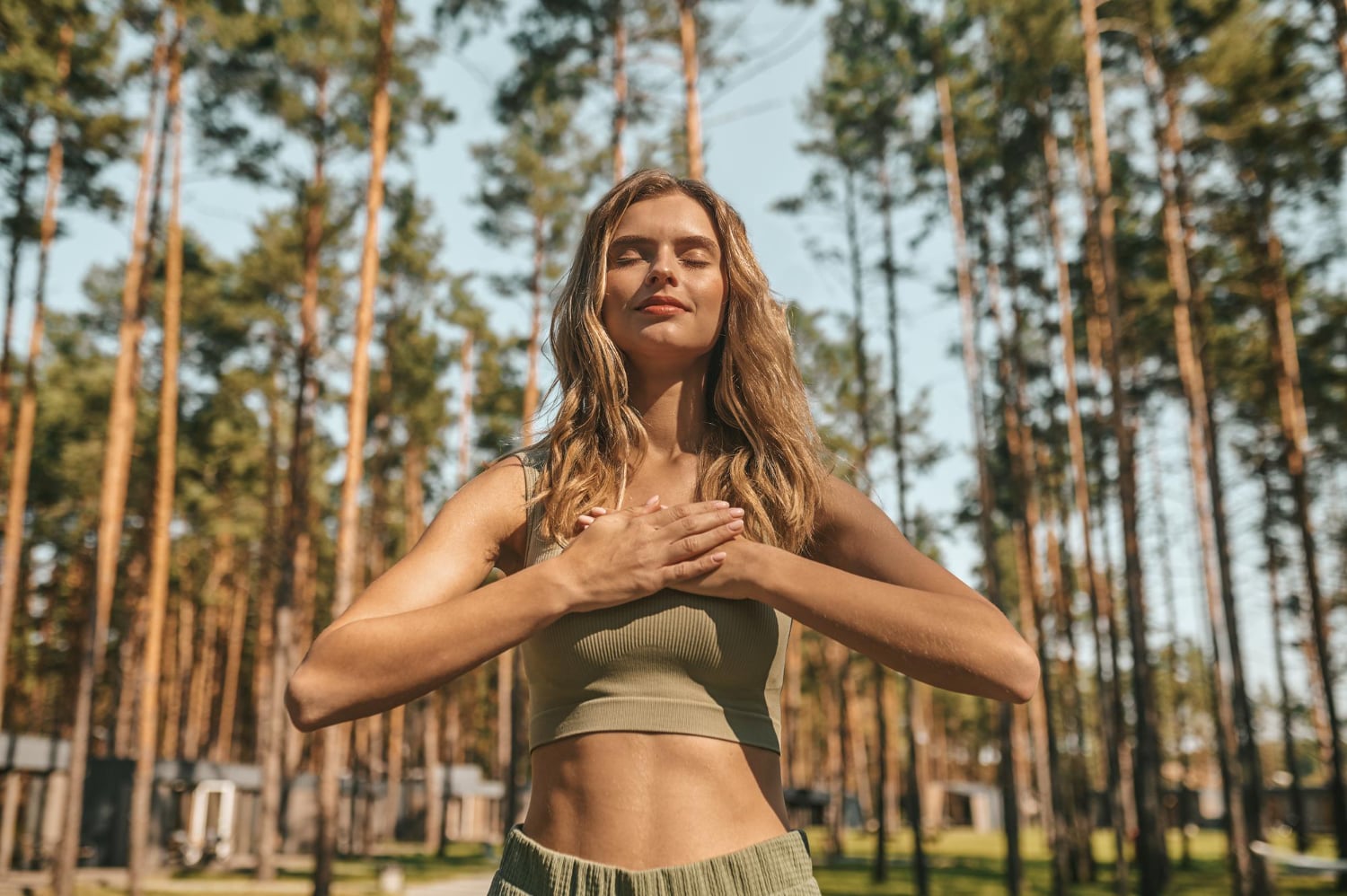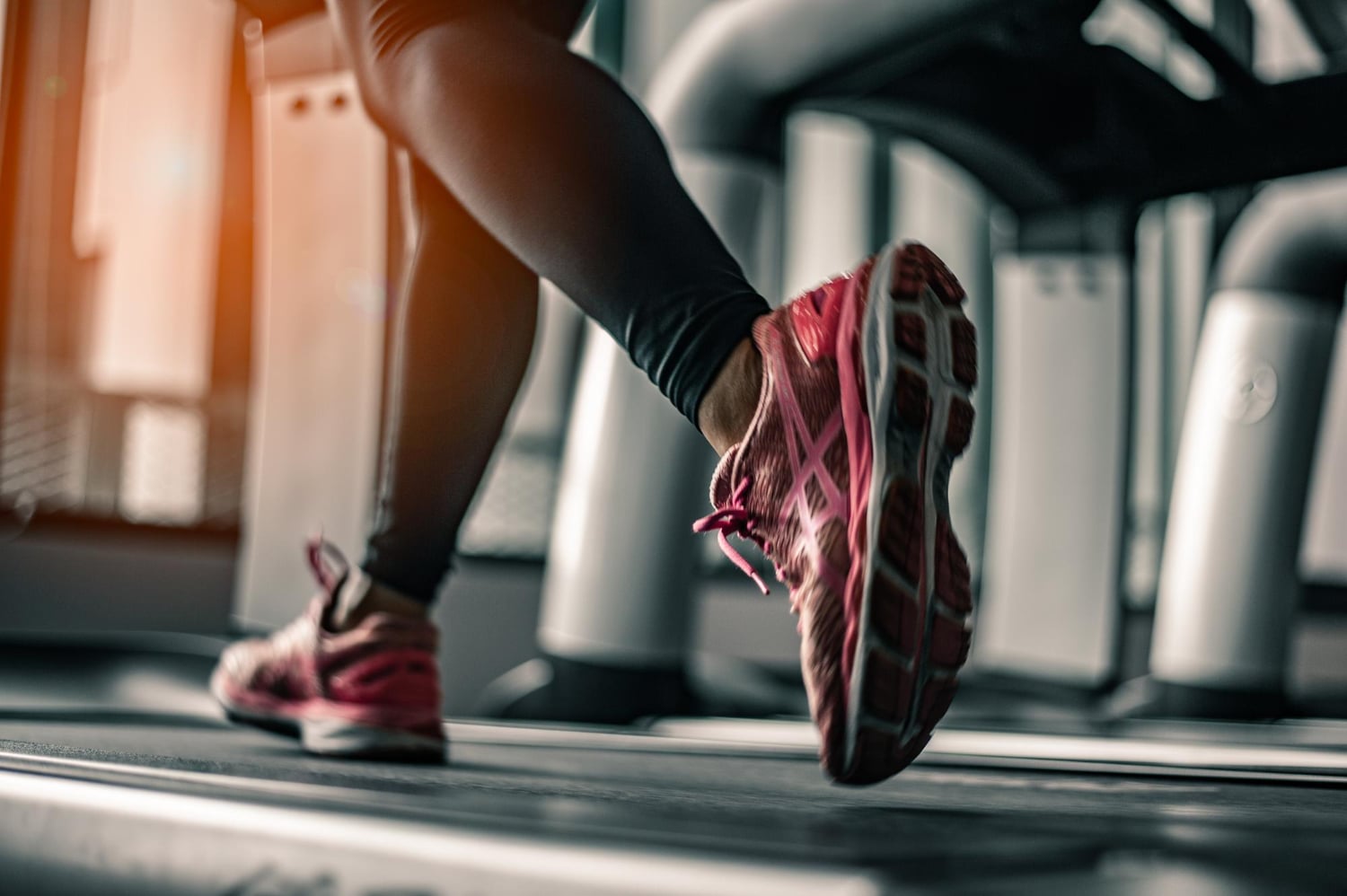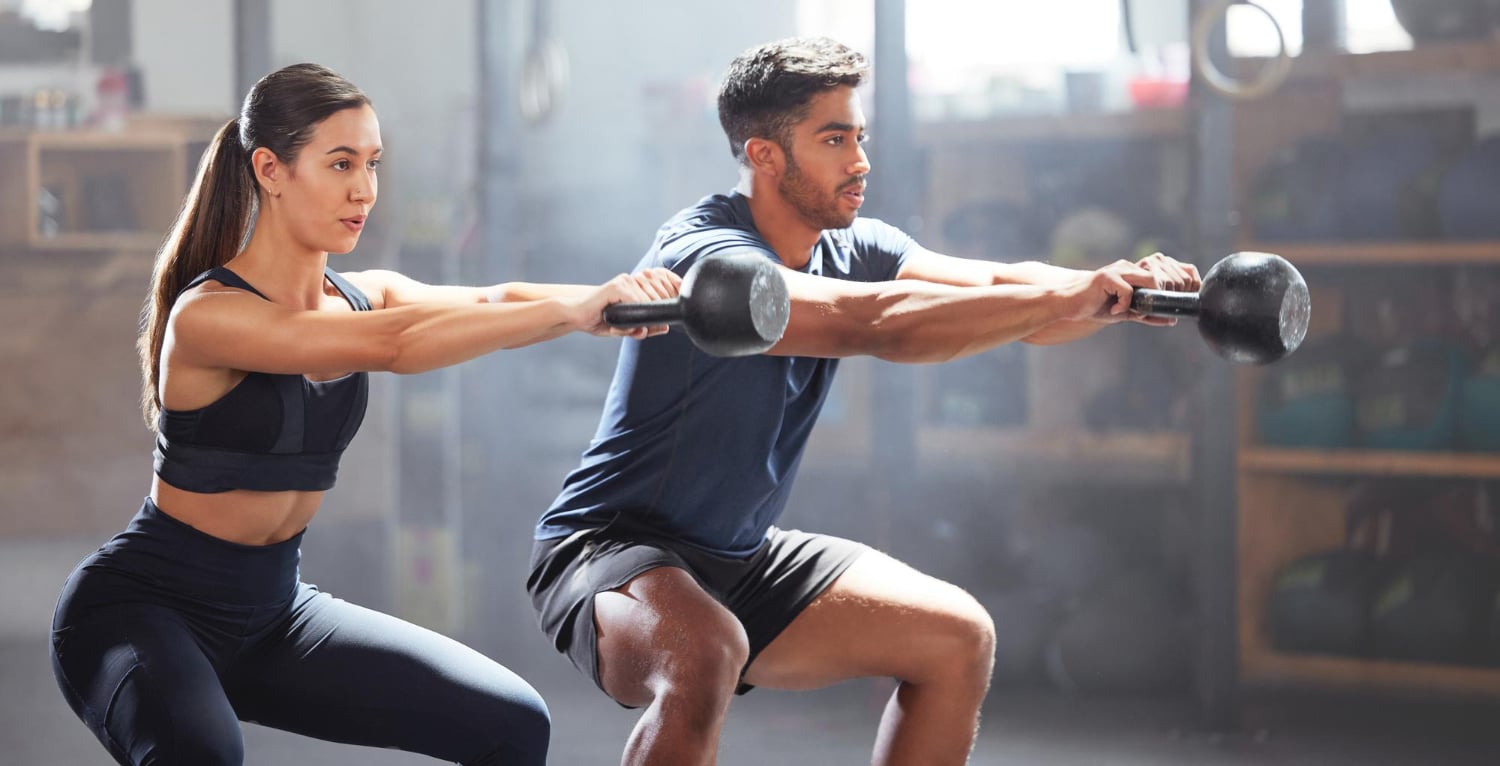Unearthing Our Athletic Roots: A Deep Dive into Primal Movements


Introductory Strides into the Primal
Embark on a journey where fitness meets our ancestral roots, harmonizing a symphony that orchestrates the primal movements, fundamental exercises born from the quintessential actions of our forebears.
As we peel back the layers of sophisticated training modules, we uncover the raw, intrinsic physicality that has shaped human survival and functionality for millennia.
In the heart of our physical endeavors, from the rudimentary tasks to the pinnacle of athletic performance, echoes the resonant beat of primal movements. These are not just exercises; they're time-honored motions that have rippled through our evolutionary history, shaping the way we move, interact, and survive within our physical environment. In the exploration of primal movements, we don't merely analyze exercise patterns; we unravel the tightly knit tapestry that interweaves our anatomical structure, physiological function, and inherent athletic capability.
Rooted in Our Past, Built for Our Future
As we unbridle the potential encapsulated within primal movements, it's pivotal to recognize that our bodies have been meticulously sculpted by eons of evolutionary pressures, finely tuning us to perform a spectrum of fundamental movements with innate proficiency. It's within the realm of these motions - the squat, lunge, push, pull, hinge, twist, and gait - that we find the seeds from which our physical capabilities blossom.
Squat: The Fundamental Descent and Ascent
The squat isn’t merely a lower-body exercise; it’s a primal embodiment of our ability to transition between levels, navigate our environment, and engage with the world from different heights. Its impact reverberates through our daily activities, from the simplicity of sitting to the dynamic power displayed in jumping.
Within the squat lies the synthesis of strength, mobility, and stability, harmonizing the muscular concert that plays throughout our hips, knees, and ankles. The depth, control, and power encapsulated within this movement cascade through our athletic and functional endeavors, substantiating the need for its mastery.
Lunge: Navigating Through Spatial Dimensions
The lunge propels us through space, allowing us to explore, traverse, and dynamically interact with our surroundings. Beyond its manifestation in stepping, the lunge finds its roots intertwined with our capacity to reach, lean, and explore the spatial dimensions around us.
This movement amalgamates strength and stability, challenging our equilibrium while demanding a synchronized engagement from our musculature. Through the mastery of the lunge, we unlock a level of spatial freedom, maneuverability, and functional utility that permeates through every step we take.
Push and Pull: Interacting with Our World
The dyad of pushing and pulling forms the foundation upon which our interactions with the physical world are built. Pushing provides us with the capacity to exert force, manipulate our environment, and create distance from objects and obstacles. In contrast, pulling draws our world closer, allowing us to climb, grasp, and secure our surroundings.
Incorporating both into our physical regimen ensures a balanced development of our musculature and functionality, aligning our strength with our inherent capacity to navigate, manipulate, and engage with our environment effectively.
Hinge: Powering Our Posterior Chain
The hinge is less a visible movement and more an undercurrent that powers our posterior chain. In every lean forward, every lift from the ground, the hinge is at play, safeguarding our spine while channeling power through our glutes and hamstrings.
Adeptness in hinging not only shields us from potential injury but also unlocks a reservoir of power, catalyzing our capacity to lift, leap, and locomote with enhanced efficacy and safety.
Twist: Spiraling through Motion
Twisting or rotational movement cuts through the linearity, introducing a three-dimensional complexity to our physical interactions. It entwines our core, establishing a kinetic linkage that spirals from our pelvis through our torso.
The twist isn’t merely an isolated motion; it’s a critical conduit through which power is transferred across our body, enhancing our athletic output, and infusing multi-dimensionality into our movement patterns.
Gait: The Essence of Locomotion
Gait transcends mere walking, encapsulating the myriad of ways we propel ourselves forward. From the casual stroll to the explosive sprint, our gait is the rhythmic expression of our inherent need to move, explore, and interact with our world.
Understanding and optimizing our gait not only enhances our locomotive efficiency but also serves to mitigate injury, ensuring that each step we take is both powerful and sustainable.
Culminating into Functional Mastery
In unraveling the tapestry of primal movements, we are not merely exploring exercises but engaging with a functional dialogue that has been spoken through our bodies for millennia. It’s within this dialect that we find the keys to unlocking our inherent athletic potential, fostering a fitness that is not just visible in our physique but palpable in every movement we execute.
In synthesizing our understanding of these primal patterns, we lay down a robust foundation upon which our functional capabilities, athletic prowess, and physical longevity are built. The beauty of primal movements doesn’t merely lie in their simplicity, but in their universal applicability, resonating through our daily lives, athletic pursuits, and functional longevity.
Closing Thoughts
Through a mastery of primal movements, we don’t just move; we communicate, expressing a physical language that has been inherently etched into our physiological blueprint. This is a journey that transcends the physical, reaching into the depths of our evolutionary history, and propelling us forward into a future where our fitness is as functional, dynamic, and holistic as the myriad of movements it empowers.
In the bustling dynamic of contemporary fitness – speckled with an array of technology, diverse workout regimes, and nuanced nutritional plans – the primal movements stand steadfast, a timeless testament to our intrinsic physical roots. There's a profound potency in the essential, a depth that calls to our very biological basis, beckoning us to recognize and realize our fundamental athletic capabilities.
The Tapestry of Training: Blending Old and New
The undulating threads of primal movements weave through the tapestry of modern training methodologies, offering a grounded foundation from which our athletic endeavors can robustly sprout. A squat, for instance, isn’t merely an exercise; it's an embodied expression of our evolutionary journey, an action that has propelled our survival and functionality across epochs. It's through the eyes of our ancestors that we perceive the multifaceted utility embedded within such movements, witnessing their rippling impacts across our daily lives, athletic pursuits, and functional longevity.
An Unbroken Chain from Past to Present:
In our ancestors' days, primal movements weren’t executed as structured exercises but were integrated seamlessly into daily life - a necessity for survival. The squat wasn’t an action to sculpt the legs but a position adopted to rest, work, and gather. Similarly, lunges, pushes, and pulls were entwined with the essential tasks of hunting and gathering. This unbroken chain of movement, from antiquity to our contemporary landscape, illustrates a timeless relevance, substantiating the incorporation of primal movements into our modern training paradigms.
Marrying Functionality and Athleticism:
The utility of primal movements permeates beyond the mere enhancement of strength or mobility, marrying functionality with athleticism. The push, once utilized to create distance from predators or obstacles, now transmutes into the realm of sports, enabling athletes to powerfully engage, push off, and manipulate their physical environment and opponents. Thus, the primal becomes not just an exercise but a fundamental athletic language, spoken through the body across diverse sporting and physical contexts.
Cultivating Connectivity: Bridging Isolation and Holism
Primal movements bring forth an opportunity to dissolve the artificial barriers erected by compartmentalized training, fostering a milieu where our bodies can rekindle their inherent, holistic connectivity.
Disbanding Muscular Silos:
In the exploration of primal movements, we step beyond the confinement of isolated muscle training, embracing a modality where our body moves not as a collection of independent parts but as a harmonized, cohesive unit. The lunge, for instance, is not merely a leg exercise; it's a symphony of engagement, calling upon stability from the core, mobility from the hips, strength from the legs, and coordination from our neuromuscular system. Each primal movement, in its essence, is a confluence where various muscular and systemic rivers meet, providing a platform from which our bodies can engage with the world in a unified, powerful manner.
The Holistic Ripple Effects:
The benefits cascading from such holistic engagement extend their tendrils far beyond the realms of strength or flexibility, permeating into our postural integrity, kinesthetic awareness, and injury prevention. A well-executed pull, such as a climb or a row, is not just an upper-body activity; it’s a total-body engagement, calling upon stabilization from the legs, anchoring from the core, and articulation from the shoulders and arms. The holistic engagement inherent within such actions ensures a balanced development across our physiology, mitigating the risk of imbalances and injuries, and fostering a functional, sustainable athletic longevity.
Integrating the Primal into Modern Paradigms
Versatility in Application:
Primal movements, in their simplicity and depth, offer a versatile tool, applicable across various training regimes, whether it be high-intensity interval training (HIIT), functional training, or athletic conditioning. The squat can be as potent in a strength-building set as it is in a high-intensity workout, providing a scalable, adaptable modality that can be molded to suit diverse training and athletic needs.
A Scalable Journey:
The primal path is not rigid but beautifully scalable, enabling individuals to embark upon their journey from their respective starting points. A push, for instance, might manifest as a push-up for some, a chest press for others, and a supportive modality for those rehabilitating or navigating physical challenges. Thus, primal movements provide a scaffold from which a spectrum of individuals, from diverse athletic and health backgrounds, can construct their path towards enhanced functionality and wellness.
Concluding Reflections
In embracing primal movements, we invite not just a series of exercises but a philosophy into our training regimes – a philosophy that honors our physical heritage, recognizes the depth of our athletic potential, and provides a sustainable path forward, where our fitness is not just realized but lived, breathed, and experientially understood. It’s here, in the undulating dance between the primal and the modern, that we find a space where our athletic endeavors are not just performed but intrinsically expressed, fostering a realm where our movements, in all their raw, fundamental beauty, become a timeless testament to our inherent, unbreakable strength.
Concluding Steps: Manifesting an Epoch of Physical Harmony through Primal Movements

As we teeter on the precipice of fitness evolution, observing the boundless methodologies, strategies, and philosophies unfold before us, it becomes saliently clear that our next step isn’t merely into a new regimen or paradigm but into a deeper, more intrinsic understanding of our own physical nature.
By engraining primal movements into the fabric of our fitness philosophy, we embark on a journey that doesn’t merely optimize our training but harmonizes it with the evolutionary design of our bodies, cultivating a landscape where strength and capability emerge not just as quantifiable entities but as lived experiences.
A Reverberation of Ageless Wisdom in Training

The inclusion of primal movements such as squatting, lunging, pushing, pulling, hinging, and rotating, is not merely a nod to our ancient predecessors but a bow to a timeless wisdom, a wisdom that saw our species survive, thrive, and evolve within an ever-shifting world.
Our forebears were embodiments of functional strength, their muscles and movements perfectly harmonized with the tasks that their world demanded – whether that be chasing prey, climbing terrains, or protecting kin.
By sewing these movements into our fitness practices, we aren’t merely strengthening muscles; we’re echoing an ageless wisdom, a tacit knowledge that transcends time, perpetuating a strength that is profoundly, intrinsically human.
Breathing Life into Our Athletic Pursuits

Integrating primal movements means more than simply altering our workout routines; it signifies breathing life into our athletic endeavors.
These movements don’t just work muscles in isolation but invite the body to engage in a holistic, integrated manner that mimics the very actions for which our bodies were designed.
The deep squat mirrors the restful postures adopted by our ancestors; the powerful push and pull resonate with the dynamic, forceful engagements of survival in the wild.
In practicing these movements, we ignite a cellular memory, a physical echo that reverberates through our tissues, connecting us to a potent, visceral form of strength and capability.
Experiencing Fitness in its Purest Form
The foray into primal movements is an invitation into an experiential fitness realm, where our physical development is not merely measured but felt, lived, and breathed within every sinew of our being. Each squat, push, and pull becomes more than a repetition; it becomes an expression, a tangible manifestation of our evolutionary prowess, our survivalist history. We begin to understand our bodies not just as vessels to be shaped and sculpted but as complex, capable entities designed to move, engage, and interact with our world in a myriad of powerful ways.
Steering into a Future of Sustainable Wellness:
By aligning ourselves with these fundamental movements, we steer our ship into a future where our wellness is not defined by aesthetic or arbitrary benchmarks but by a sustainable, functional fitness that supports our endeavors, safeguards our health, and enhances our experiential engagement with the world around us. A future where our strength is not just seen in the mirror but felt in our actions, where our capability is not just displayed in our performance but lived in our everyday experiences.
The Final Footprint on a Primal Path:
In integrating primal movements into our daily practice, we leave a footprint, not just on the path of our own fitness journey but on a timeless trail that has been trodden by countless generations before us. We connect with a fundamental, primal essence, creating a continuity that extends from the ancient, through the present, and propels into the future. And it's within this continuity that we find more than just a strategy for physical development; we discover a philosophy, a way of engaging with our bodies and our world that is as profound, enduring, and inexhaustible as the movements themselves.
Embracing the primal is to dance to a rhythm that has been beating since the dawn of our kind – a rhythm that will continue to pulse through our collective physicality, guiding, supporting, and enhancing our kinetic engagements with the world, towards a horizon where our fitness is not just achieved but inherently, vibrantly lived.

